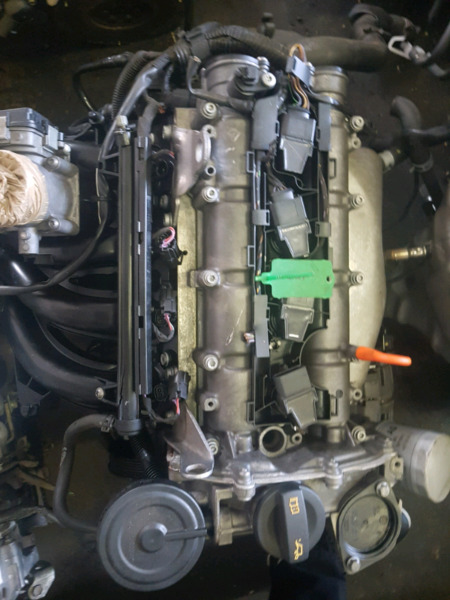Exactly How a Clp Engine Can Boost Effectiveness in Different Industries
The advent of CLP engines marks a considerable shift in operational performance throughout various fields, driven by their capacity to maximize fuel usage and decrease downtime. Industries such as manufacturing and logistics stand to get substantially from their robust design and regular power outcome, which guarantee to improve procedures and improve productivity. As companies significantly focus on sustainability alongside efficiency, the duty of CLP engines becomes a lot more important. What continues to be to be seen is just how these advancements will certainly shape the future landscape of commercial operations and their influence on broader economic trends (clp engine).
Overview of CLP Engines
CLP engines, or Continuous Fluid Propellant engines, stand for a significant innovation in propulsion modern technology, especially for room applications. These engines utilize a continual feed system that enables the continual expulsion of propellant, resulting in enhanced effectiveness and efficiency contrasted to traditional strong or hybrid propulsion systems. By maintaining a consistent flow of fluid propellant, CLP engines can accomplish more accurate drive control, which is important for maneuvering spacecraft in various objective scenarios.
The layout of CLP engines integrates sophisticated materials and cutting-edge gas administration systems. clp engine. This leads to reduced weight and increased reliability, necessary variables for long-duration space missions. The continual operation minimizes the risk of combustion instability, a typical difficulty in standard rocket engines.

Advantages in Manufacturing
The production of Continuous Liquid Propellant (CLP) engines provides a number of noteworthy benefits that enhance both effectiveness and cost-effectiveness. Among the main benefits is the streamlined production process, which reduces the intricacy associated with traditional propulsion systems. By using fluid propellant, manufacturers can attain better precision in engine performance, leading to enhanced energy outcome and minimized waste.
Additionally, CLP engines assist in a greater degree of modularity, enabling for simpler assimilation into different manufacturing lines. This versatility can dramatically reduce preparations and enhance total operational flexibility. Making use of CLP technology also tends to lessen the requirement for extensive maintenance due to fewer relocating parts, which converts right into decreased downtime and functional prices.

Applications in Logistics
Leveraging Constant Fluid Propellant (CLP) engines in logistics offers considerable benefits in functional performance and integrity. These engines give a robust remedy for various transport needs, making it possible for the seamless motion of items across substantial distances. The inherent layout of CLP engines permits regular power output, which equates into smoother and a lot more foreseeable transport schedules.
One of the crucial applications of CLP engines in logistics remains in sturdy products transport, where they can drive both ground and aerial automobiles. Their ability to maintain high efficiency under differing tons problems ensures that delivery timelines are met, thereby enhancing consumer contentment. Furthermore, CLP engines can be incorporated into automated logistics systems, promoting real-time monitoring and maximizing course planning.
Furthermore, the toughness of CLP engines lowers maintenance downtime, permitting logistics firms to optimize their operational capabilities. This is specifically beneficial in warehousing operations, where performance in taking care of and carrying products is important. As logistics remains to develop, the combination of CLP engines stands for a forward-thinking approach that not only improves performance but likewise supports the sector's growing demands for integrity and rate.
Effect On Energy Performance
Just How do Continual Fluid Propellant (CLP) engines enhance energy efficiency in transportation? CLP engines make use of a regular circulation of fluid gas, optimizing burning processes and preserving a steady drive result. This style minimizes energy losses related to conventional burning engines, where gas delivery can differ and cause inadequacies.
The constant operation of CLP engines permits a much more efficient thermal cycle, causing higher certain impulse compared to conventional engines. clp engine. This translates to lowered fuel usage for the exact same quantity of work done, significantly reducing operational expenses throughout different transportation fields, including air travel and maritime sectors
In addition, the capability of CLP engines to maintain ideal performance under differing load conditions lowers the demand for regular velocity and slowdown, further boosting fuel effectiveness. Boosted power efficiency not just adds to set you back financial savings however additionally brings about decrease greenhouse gas exhausts, straightening with international sustainability objectives.
Future Trends and Innovations
Arising improvements in Constant Liquid Propellant (CLP) engine modern technology assurance to reinvent the landscape of transport performance and check my reference sustainability. As markets pivot toward greener alternatives, CLP engines stand at the forefront, integrating cutting-edge products and style approaches that boost efficiency while decreasing environmental influence.
One of the most appealing patterns is the adoption of hybrid systems that incorporate CLP engines with renewable resource resources. This synergy can maximize gas usage and minimize emissions, lining up with worldwide sustainability goals. Furthermore, advancements in computational fluid characteristics (CFD) are facilitating the layout of even more navigate here aerodynamically reliable engines, resulting in lowered drag and enhanced fuel efficiency.
Moreover, the advancement of smart tracking systems is readied to improve operational effectiveness. These systems leverage information analytics and IoT technology to maximize engine efficiency in real-time, making certain that the engines run within their most efficient criteria.
As research remains to discover alternative propellant formulations-- such as biofuels and artificial fuels-- the future of CLP engines looks promising. By utilizing these technologies, industries can not just enhance their efficiency but likewise contribute dramatically to a cleaner, much more lasting future in transport.
Final Thought
In final thought, CLP engines stand for a significant improvement in performance across multiple markets. Their ability to maximize gas consumption and minimize operational expenses, combined with a continual feed system, enhances power outcome and operational reliability. The assimilation of advanced materials and fewer relocating components minimizes maintenance needs, while continue reading this positioning with sustainability goals positions CLP engines as an essential technology for the future. Continued innovation in this area promises further improvements in effectiveness and environmental performance.